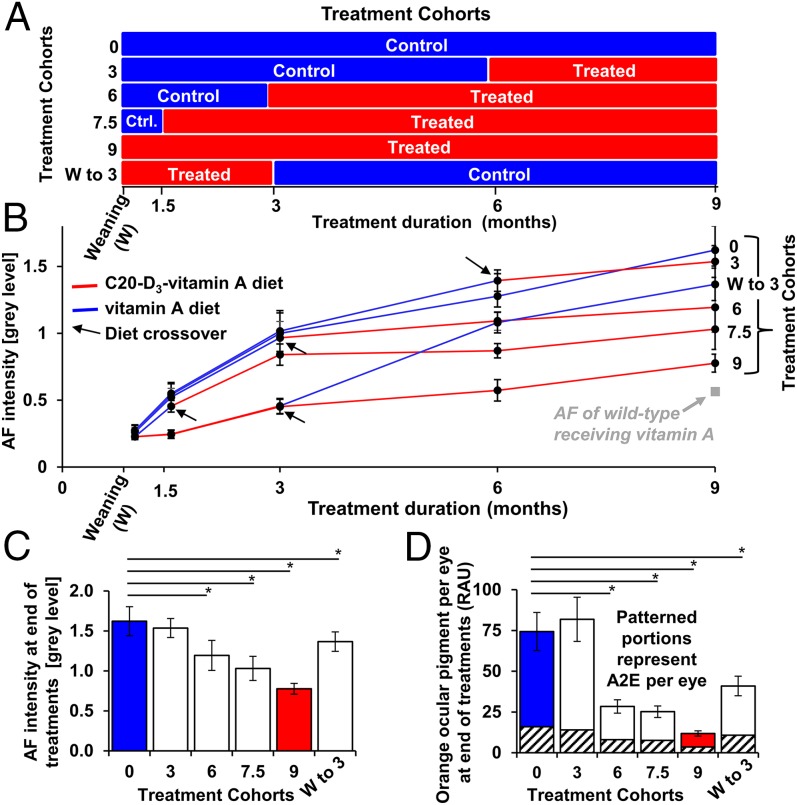Fig. 6.
C20-D3-vitamin administration rapidly prevents vitamin A dimerization and lipofuscin accumulation. (A) Abca4−/− mutant mice were divided into six experimental cohorts, and each cohort was administered a diet containing C20-D3-vitamin A (treated) or vitamin A (control) over time, according to the panel. (B) Relative average 488-nm fundus AF intensities with SDs from animals described in A. Ten eyes were averaged for each data point (n = 10). The red lines correspond to the periods during which animals were administered C20-D3-vitamin A, as shown in A, whereas the blue lines correspond to the control diet. Treatment crossovers are highlighted by black arrows. Data were normalized so that untreated controls had a relative AF intensity of 1 at 3 mo. Data points at weaning and 1.5 mo are extrapolated from historical controls. (C) Relative average fundus fluorescence intensities with SDs, at 9 mo of age, at the conclusion of treatment regimens described in A and B. (D) Average amounts of total orange ocular pigments and of the A2E dimer, with SDs, in 9-mo-old animals, at the end of treatment, as determined by UPLC. *P < 0.05. P values compare significant deviations from wild-type animals fed vitamin A.

